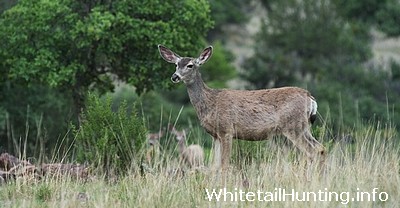Most deer hunters are vaguely familiar with chronic wasting disease (CWD). The name itself may ring a bell, or hunters might have read something about it, but the fatal deer disease could negatively impact whitetail hunting in Texas. At least in West Texas, for now. Recent reports from Texas Parks and Wildlife Department have confirmed that CWD is just across the Texas border, in extreme southern New Mexico. It is now a matter of when — not if — Texas will have to deal with CWD in mule deer and whitetail deer.
Source: “Other states — Wisconsin most notably, in a miserable and basically failed attempt to stop CWD when it first showed up there — have tried to de-populate areas with known CWD outbreaks. That really doesn’t work and generally causes considerable backlash among hunters and landowners. It’s unlikely that would happen in Texas, said Mitch Lockwood, big game program director for TPWD.
“There’s been discussion about mandatory check stations in that (containment) zone,” he said. TPWD also would shut down any movement of live deer within the CWD zone, Lockwood said, which would mean that the department would issue no permits for trapping and transport of wild or captive deer or capturing wild deer for breeding programs.
Lockwood said current numbers would require the state to gather 300 or more negative samples of brain tissue from deer in that part of the state in order to ensure a 95-percent confidence figure that the disease was not in Texas. Even then the likelihood is small that TPWD would just open the gates to any and all deer movement.
Some landowners with certified CWD-free status over a period of years possibly could begin to move some animals, he said, but the first response probably will be to reduce the size of the containment zones and continue checking within what biologists have decreed as the CWD hot zone. “We’ve already proposed what we think is a prudent response,” Lockwood said.
In addition, TPWD will have to work with New Mexico authorities to develop an interstate response and management plan, since animals on both sides of the Texas-New Mexico boundary line move back and forth. New Mexico has found CWD there and both states will be working to “contain it in that area,” Lockwood said.
Those landowners want to use the same tools — Trap, Transport and Transplant, Deer Management Permits and Managed Lands Deer (MLD) Permits — that whitetail managers use in the rest of the state. But, the department has been hesitant to begin wholesale deer movement and capture due to the possibility of spreading CWD to non-infected areas.”
Biologist in New Mexico have been using a tonsil test to detect CWD in some animals. Research has found that the infectious proteins of the deer disease show up there earlier than in the brain, plus the test can be used on live animals. This would be a big improvement over current brain stem samples which require that the deer be killed for testing. Lockwood admitted, “I’m very interested in learning more about it. We just need to learn more about the reliability of that test.” Whitetail hunting in Texas could be impacted by the deer disease known as CWD, but wildlife officials are trying to find out as much as they can so that sound management decisions can be made when the time finally comes.
